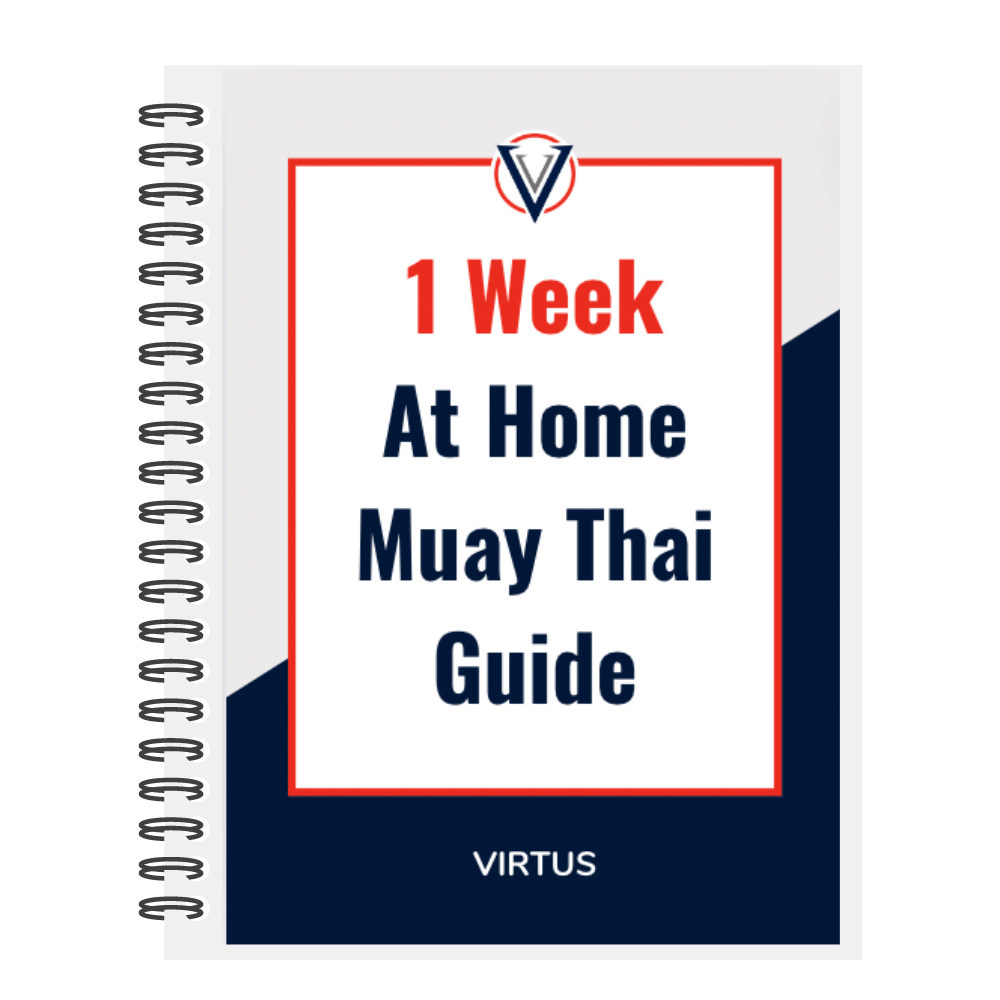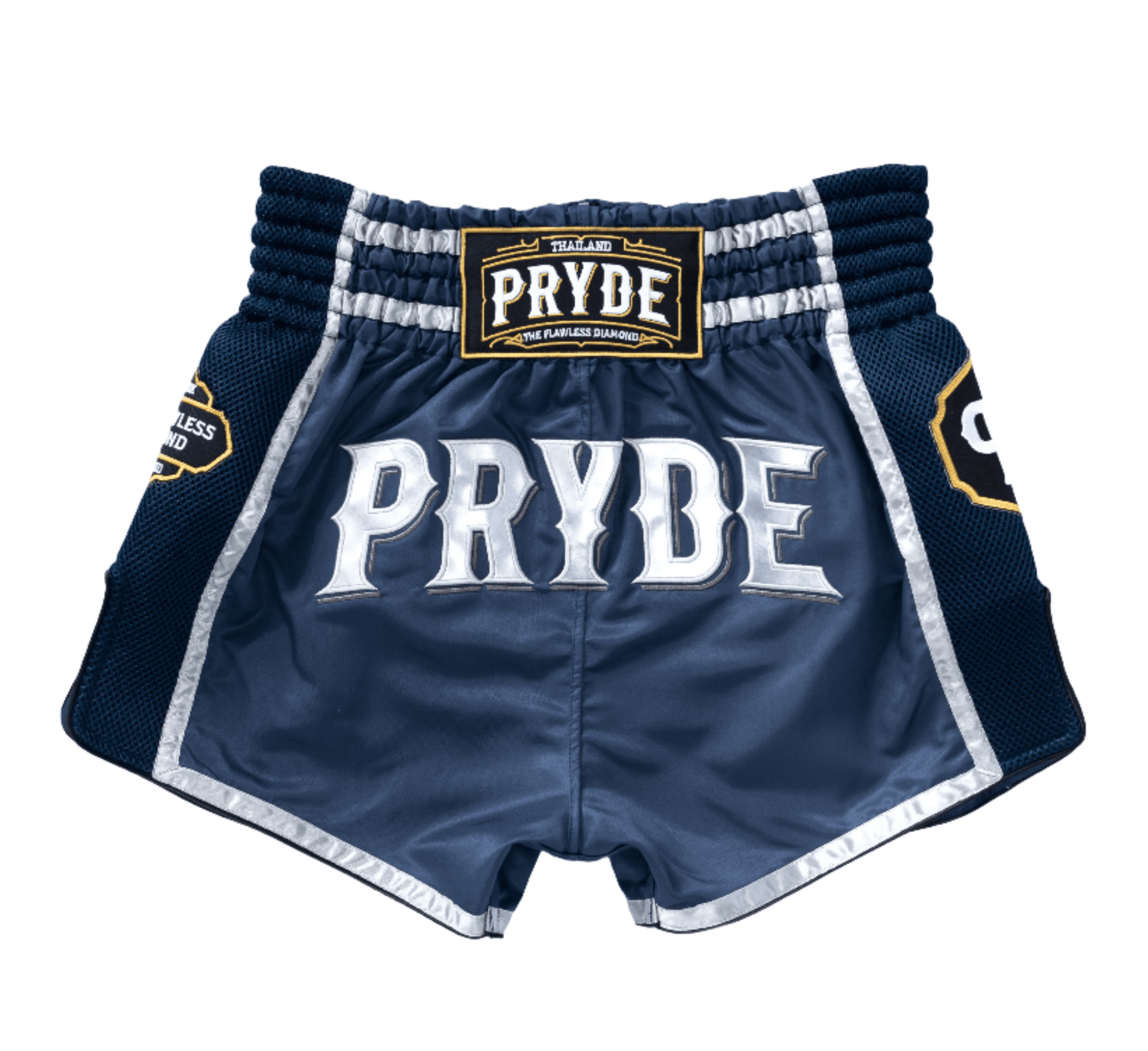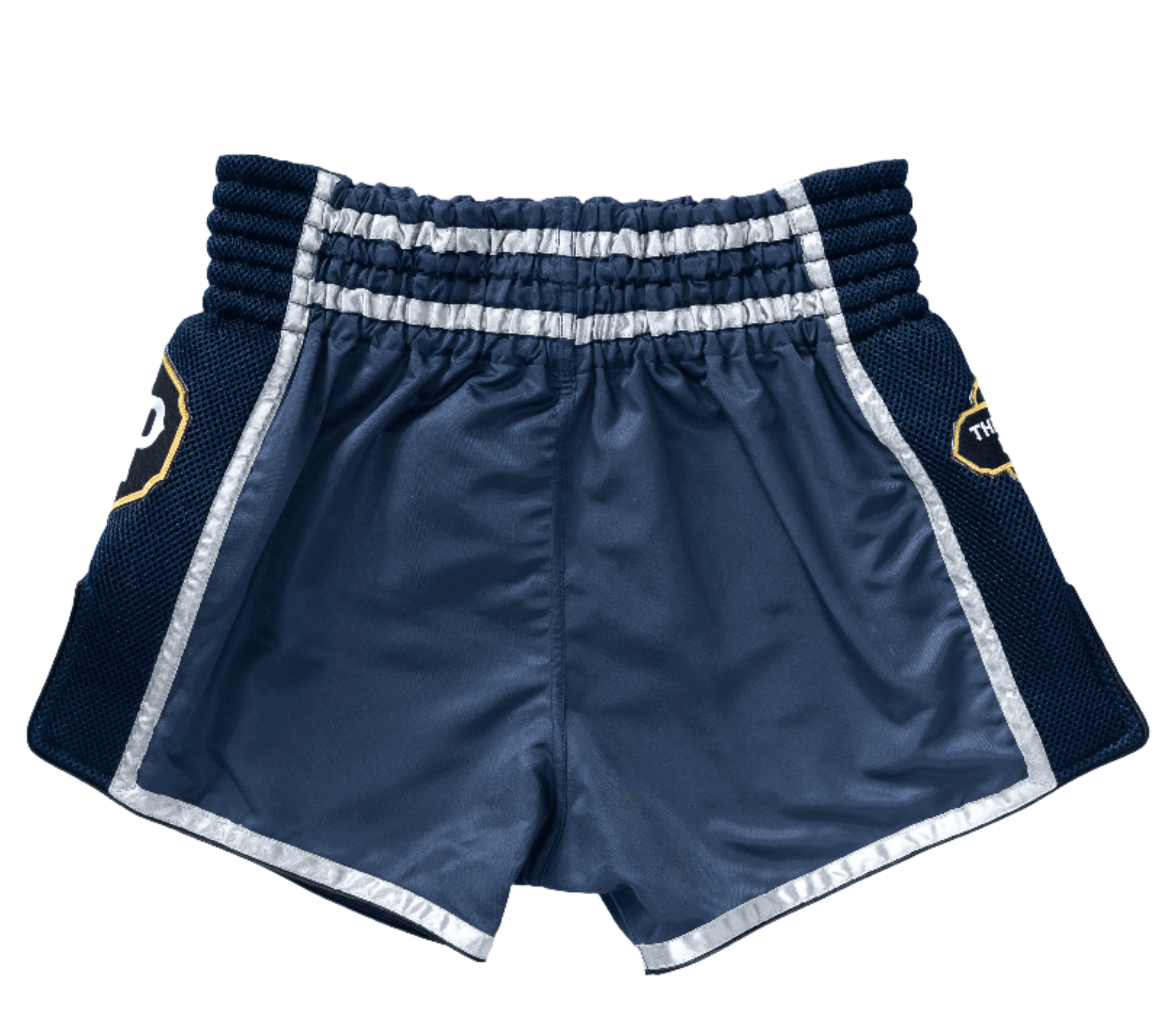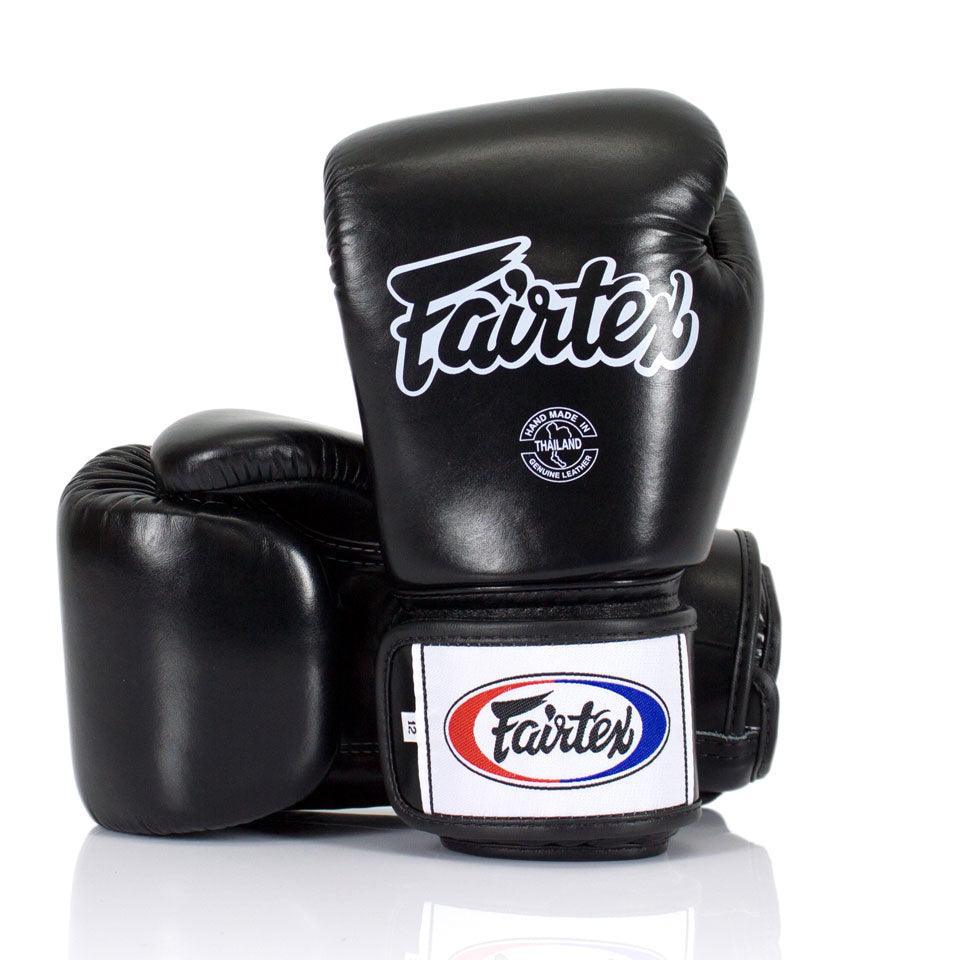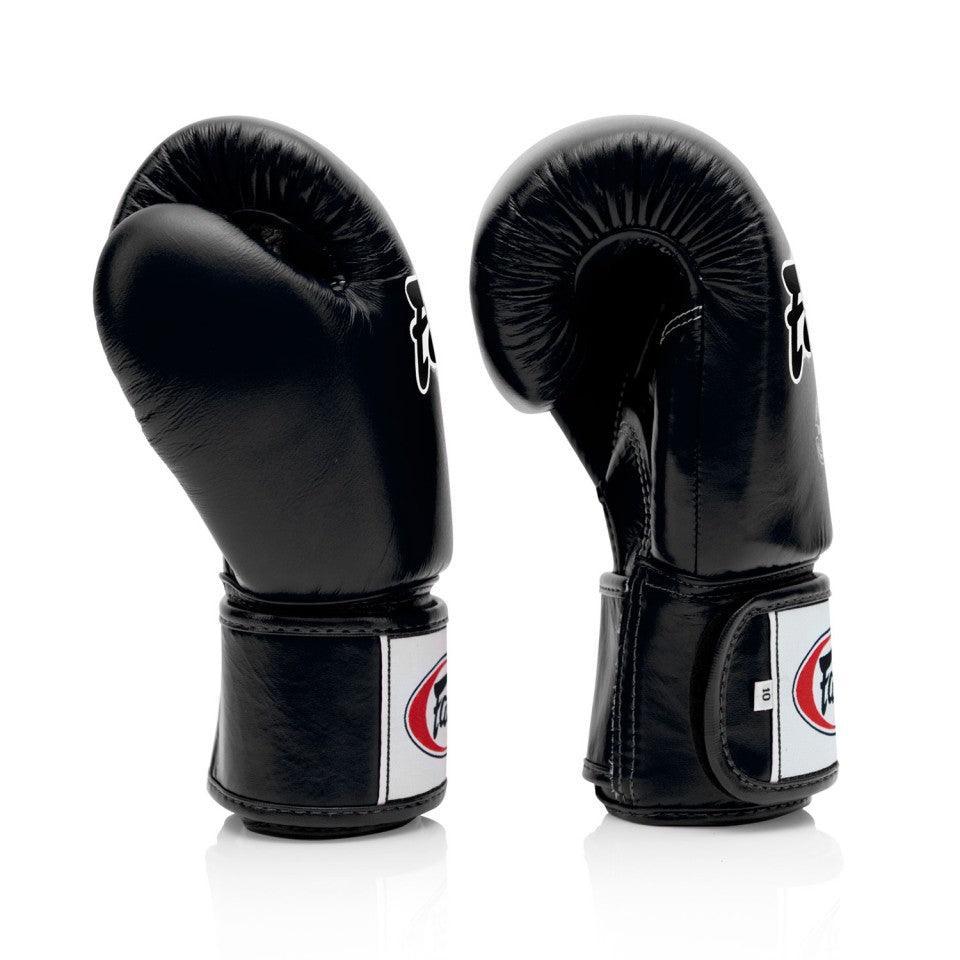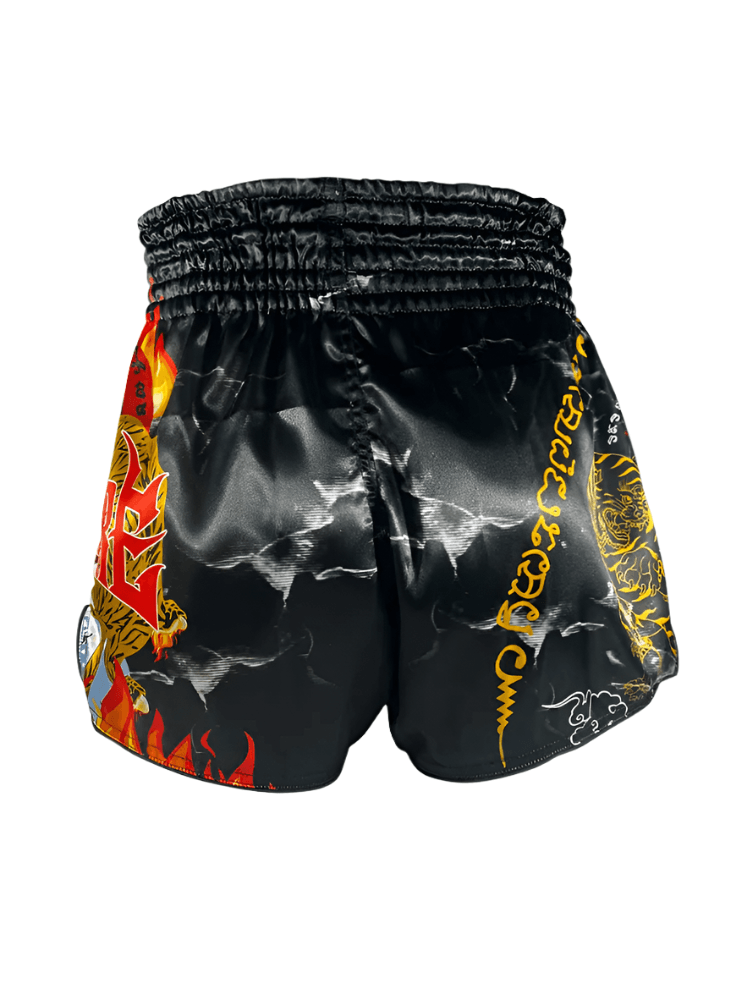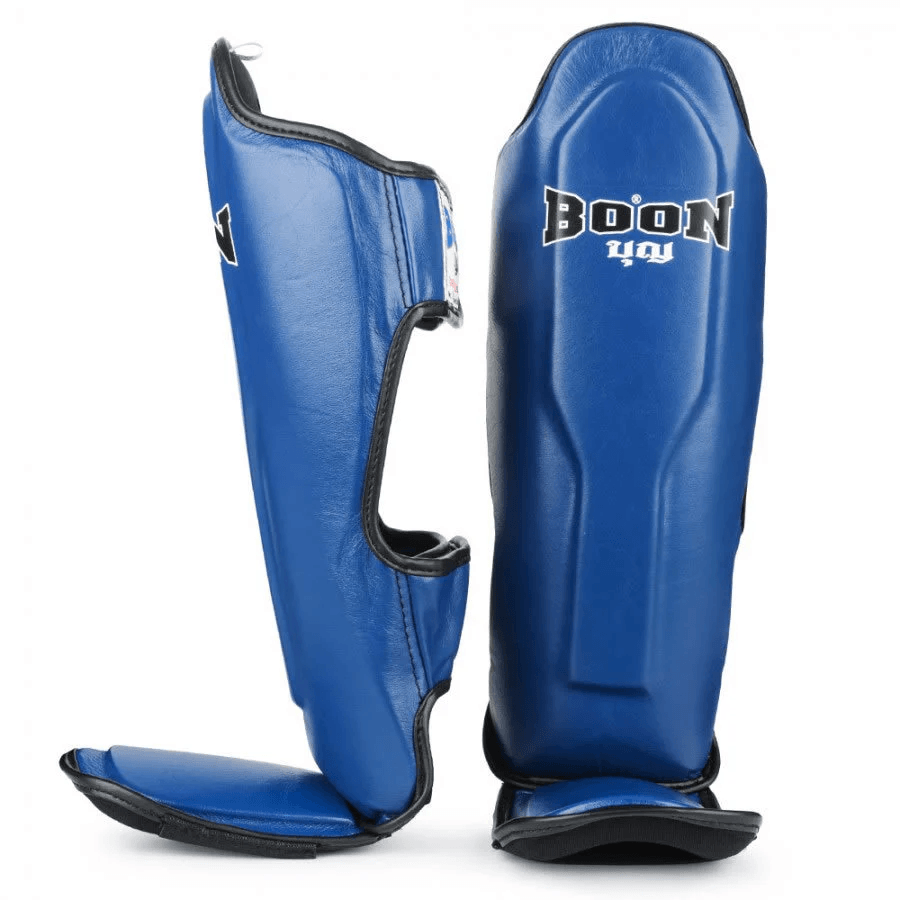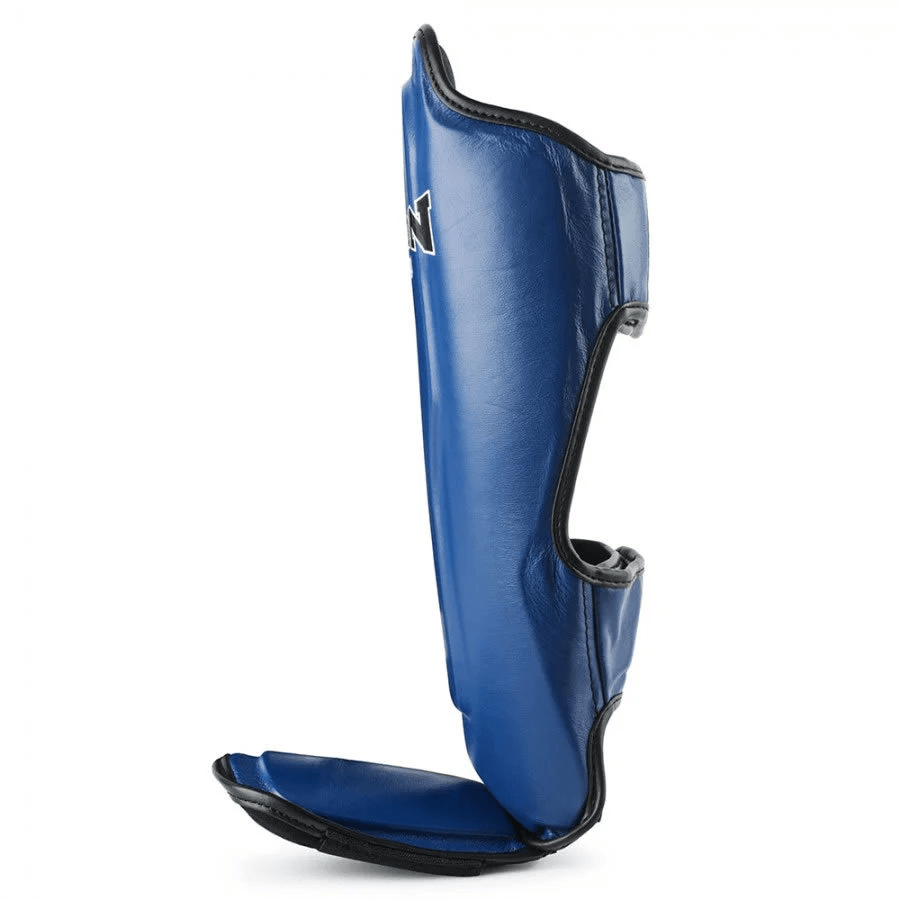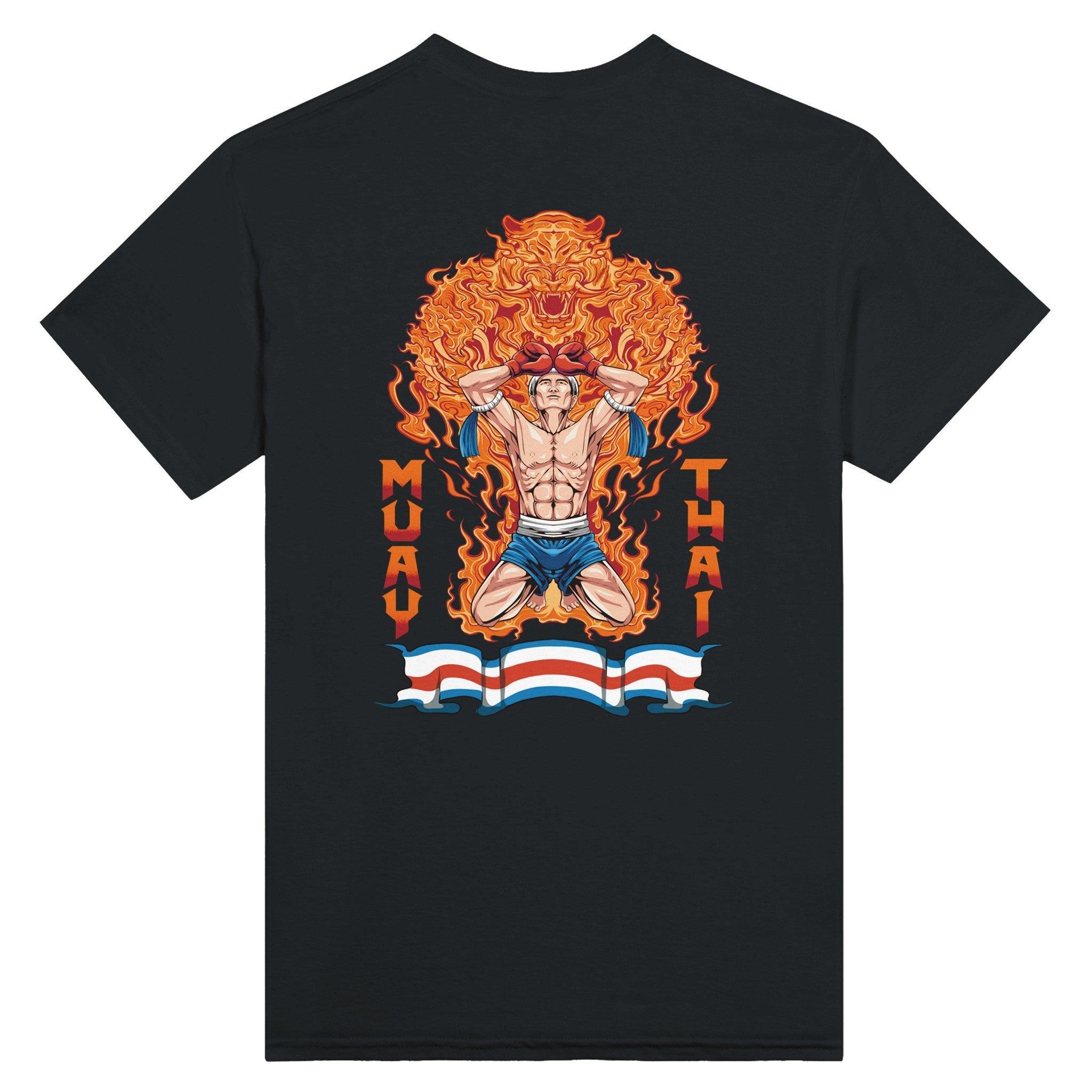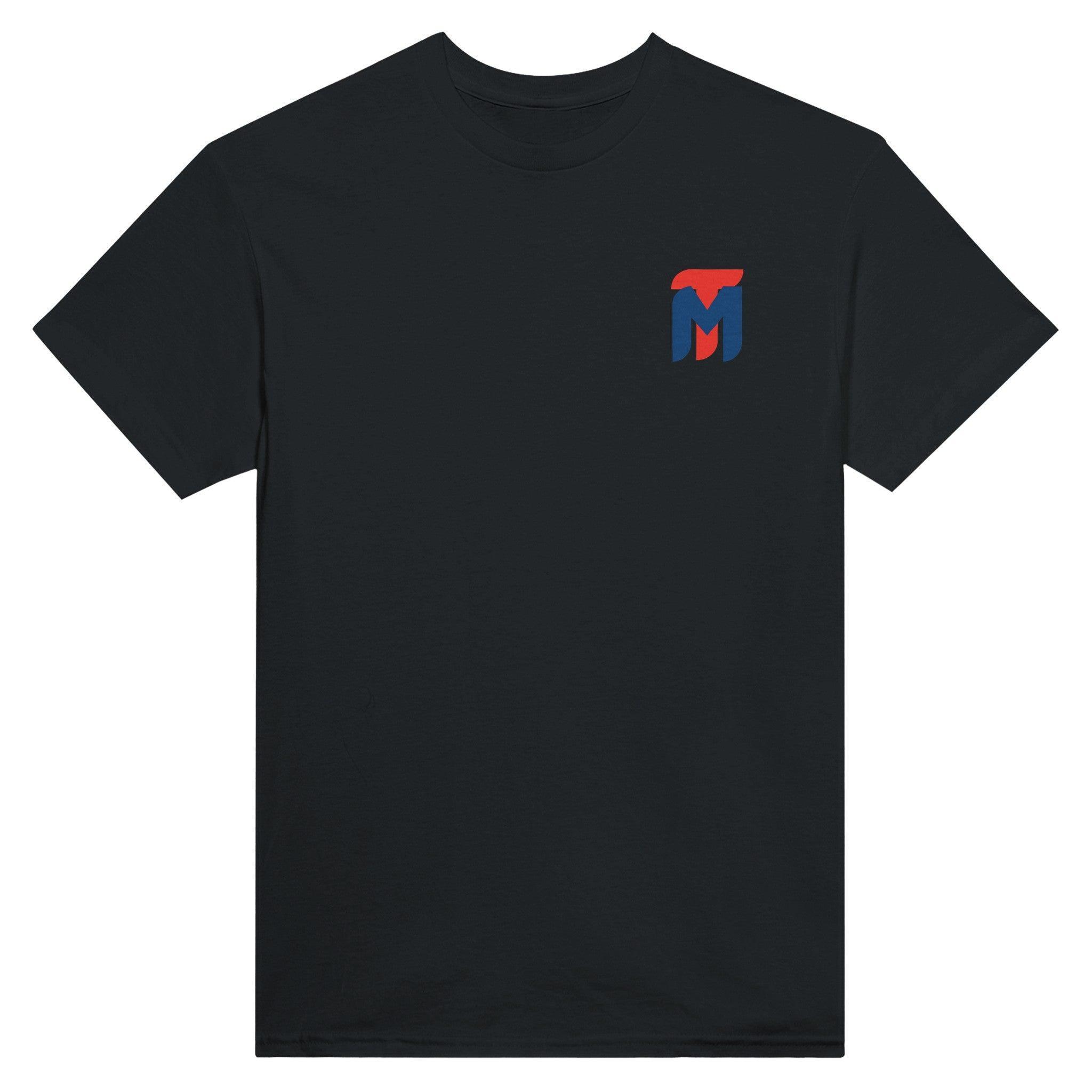Overview
Knees are some of the most powerful strikes in Muay Thai and help further differentiate it from other martial arts. Like kicks, knees can land at any area on the opponent from the thigh to the head, except the groin. Effective knees can easily knock opponents out when they land on the head or chin but targeting the right areas of the body can also cause severe pain, broken ribs, muscle damage and unconsciousness. The straight knee strike, known as Khao trong, is often the first knee strike that Muay Thai students learn. It is executed by arching the back, thrusting the hips forward, and, where possible, grabbing the opponent's neck from behind to force their head down.
Tucking the heel in towards the butt (but out to the side rather than underneath) helps sharpen the knee and ensure you strike with the pointed area, rather than the soft parts around the bottom of the knee cap. This robust point of impact, driven forward by rapid thrusting of the hips helps make knee strikes devastating. Balance can be stabilised by throwing down the arm on the same side as your striking knee and, depending on the type of knee being thrown, getting up on the balls of your supporting foot. To deliver crushing damage, you should ensure the knee is driven through the opponent with speed, momentum and accuracy, while maintaining an upright posture.
Straight Knees^
Straight knees can be thrown either short or long. Whichever the distance, straight knees draw their power from thrusting the hips forward/upward and driving through your opponent.
The short straight knee can be thrown from inside punching range or within the clinch. When outside the clinch, these knees are often thrown at the midsection, especially the abdomen, and are effective when moving forward and when an opponents moves towards you. Inside the clinch, they can be thrown at the mid-section and the head if it's pulled down.
As it sounds, the long straight knee can be thrown from long range, usually a little further than arms length, depending on how far forward the hips are thrust. The mechanics are almost identical to the short straight knee but, due to the increased distance the knee travels, you can explode forward and drive through your opponent with added momentum. The restriction of this is that the long straight knee is only properly effective when targeted at the midsection.
The motion for straight knees, whatever the range, is similar to a piercing, thrusting motion of a spear. The point of this 'spear' can be sharpened by tucking the heel into the butt. While the power of the thrust is driven by the forward motion of the hips.
Tiger Muay Thai @ Tiger Muay Thai Muay Thai & MMA Gym, Phuket
Sean Fagan @ Muay Thai Guy
Round Knees^
Following a more semi-circular motion (like the roundhouse kick) than the straight knees, round knees are typically targeted at either side of the body, particularly the ribs, obliques and thighs. They are most commonly thrown while in the clinch, where fighters are pulling one another close - to the point where there is no space to throw straight strikes. However, if you are able to step onto the outside of your opponent, you can throw a round knee to strike their front.
The hips are used to rotate the thigh around so that the inner area of the knee point makes impact. Due to the close proximity, it is difficult to get plenty of hip rotation into the knee, therefore, power is often lacking. Nonetheless, they are still very effective at wearing down your opponent, especially when the same area is repetitively punished. They can also be used to keep busy in the clinch so it is not broken up by the referee.
Kru Brandon Levi @ Evolution Muay Thai
Sean Fagan @ Muay Thai Guy
Angled Knees^
Variations of the straight knee make it naturally an angled knee for some. However, this section is focused specifically on diagonal knees and horizontal knees.
Diagonal knees, also known as Khao Chiang, are very similar to straight knees but the hips are engaged as with a roundhouse kick and the knee thrown inwards and upwards. They are typically targeted to either side of the midsection, either in or out of the clinch. Like a straight knee, the power generated from the hip thrust and drive of the knee can cause heavy damage to the body and result in a TKO or KO. Another effective knee technique in Muay Thai is the Khao Khong, also known as the curving knee. This technique follows a circular path and is often used in the clinch, catching opponents off guard with its rotational power.
Horizontal knees have even more of an angle than diagonal knees as the lower part of the leg is almost parallel to the ground. More of a tactical strike, these knees are useful for stopping your opponents leg & hip movement, both in and out the clinch.
Via Punchbagpro
Santai Muay Thai Gym via Flash Mavi
Knees In The Clinch^
Many of the knees described on this page can be used in the clinch, however, each of their respective effectiveness is dependent on the deliverer's position in the clinch and whether they are pulling their opponent into the knee.
Round and straight knees to the body and legs are the most common types of knees thrown in the clinch. There isn't always the space or time to throw these with full power and accuracy, nonetheless, persistent knees of either kind to the legs or body can wear down your opponent, cause severe stinging pain and even force your opponent to break the clinch. In addition, knees in the clinch aren't always designed to cause damage. They can also be deployed to disrupt your opponents forward movement and their own knee strikes.
If one fighter is far more dominant (or far less fatigued) than the other in the clinch, they can pull their opponent's head down and land a crushing knee to the temple, face or chin to bring about bone breakage and/or a knockout.
Tiger Muay Thai @ Tiger Muay Thai Muay Thai & MMA Gym, Phuket
Petchboonchu FA Group @ Evolve MMA
Jumping Knees^
Jumping knees can be devastating if they land thanks to the momentum they generate, however, they also leave you exposed in the air so it's important they are thrown timely, properly and accurately.
Jumping knees are most often targeted at the head, chin or nose of the opponent and are best delivered when your opponent is already disorientated or has lost their balance. In such circumstances they are particularly useful as jumping knees can cover a lot of distance in a very short period of time, so they can often catch fighters out.
Essentially, there are two types of jumping knee: the rear leg jumping knee and the scissor jumping knee. The rear leg jumping knee involves leaping off the lead leg and driving the rear leg's knee forward and upwards with the momentum of the jump. The scissor jumping knee is similar but it generates power by combining the momentum of the jump with a pushing down of the rear leg, while pulling the lead leg up in mid air (as if you were cycling on a bike), causing the lead leg's knee to make impact.
Sean Fagan @ Muay Thai Guy
Via Fightcoach.tv
Knee Combinations^
Effective knees can be thrown individually or as part of a combination, although it is less common to see throw several knees in sequence unless in the clinch. Thanks to their potentially high damage at short range, it is common to have knees and elbows in the same combination.
Range Application in Muay Thai Knees
When executing Muay Thai knees, understanding range is crucial. Different knee strikes like the straight knee and round knee are effective at varying distances. Straight knees are ideal for long-range attacks, targeting the core or head, whereas round knees excel in close-quarters combat, focusing on the midsection or thighs. Diagonal knees are especially effective in targeting the most vulnerable parts of your opponent's midsection. By mastering the appropriate knee technique based on the distance from your opponent, you can maximize the impact and effectiveness of your strikes.
Muay Thai Knees in Counter-Attacking Strategies
Muay Thai knees play a crucial role in counter-attacking strategies. By effectively utilizing knee strikes, fighters can disrupt their opponent's rhythm and create openings for a swift response. Whether it's a straight knee to break through the opponent's guard or a jumping knee to catch them off guard, incorporating Muay Thai knees strategically can turn the tide of a fight. Understanding the timing and precision required for knee strikes enhances a fighter's ability to capitalize on their opponent's vulnerabilities and launch powerful counterattacks.
Are there specific training drills to improve the power and accuracy of muay thai knee strikes?
Yes, specific training drills like shadowboxing with a focus on knees, practicing on heavy bags to build power, and partner drills for accuracy can enhance Muay Thai knee strikes. Incorporating strength training for legs and core stability also contributes to improved technique and effectiveness.



